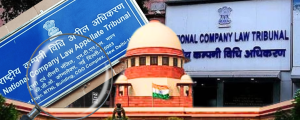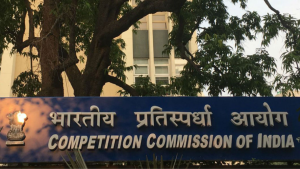

Making Bricks Without Clay: The Difficulties With Obtaining Data in Studying Indian Courts
“Data! data! data!…I can’t make bricks without clay.”
– Sherlock Holmes in Arthur Conan Doyle’s, The Adventure of the Copper Beeches
In the Bible, when Moses and Aaron demand that the Pharoah free the Jewish people living in Egypt, Pharaoh not only refuses but imposes a cruel and perverse rule upon the Jewish workers: they must now meet their daily output of bricks without the daily supply of straw (a key binding agent for bricks) by the Egyptian rulers.
Trying to undertake an empirical study of the functioning of courts in India with the present quality of data on cases often leaves one quoting Sherlock Holmes in frustration!
While there is no denying the independence and the ability within the Indian judicial system, there are multiple problems with the functioning of the Indian judiciary, not the least of which are the problems of delay and a large backlog of cases. This is actually a paradoxical state of affairs since the number of cases actually being filed per million population, is actually fewer than other nations. In fact, it is hypothesized that the prospect of delay and pendency may in fact be deterring people from approaching the system for dispute resolution over the years.
Much of the basis for debate about the issue of delay and backlog of cases is either purely anecdotal or based on a single data point which looks at all the cases pending in the country at a given moment without any breakup of type or context (the most recently quoted figure being “three crore cases”). One much quoted study for the failure of India’s judicial system, the “enforcement of contracts” section of the World Bank’s Doing Business Report relies only on the number of procedures and the number of days it takes to get a civil dispute resolves in a commercial court in Mumbai. While it may make sense in the context of comparing similar cities in other countries in the world, it does not provide us anything like an accurate picture of the state of the judiciary in India.
Part of the difficulty in studying the Indian judiciary comprehensively lies in obtaining reliable data about the judiciary in India. At the most basic level, we have the Supreme Court’s “Court News” publication which is published quarterly (though delayed by several months) which lists out the number of cases filed, disposed and pending in High Courts and District Courts across the country, apart from the numbers of judges in the country. However, the Supreme Court does not vouch for the reliability of the data since the same is compiled on the basis of the data sent to it by the High Courts and there is no verification and cross checking.
Even this data raises some questions: What is a “case” for the purposes of the statistics put out by the Court News publications? Is it one petition? Is it one application? Is it the sum total of all applications and petitions in a given dispute between parties? Are multiple petitions filed by different parties to the same dispute considered as one case or multiple cases?
While presenting the data, there is no clarity as to what the Supreme Court’s publication means when it comes to calling something a case. In the absence of such clarity, we realise that any study across courts is meaningless as the Law Commission concluded in its 245th Report given the wide variance between district courts on what counts as a “case”.
Even while looking at the data from one forum, sometimes the data can be misleading because of the idiosyncratic way in which records are being maintained. Nick Robinson for instance finds that the Supreme Court’s numbers on cases filed and disposed don’t actually reflect the case-load since some cases are “double-counted” and the numbers need to be reduced somewhat arbitrarily to take this into account.
As DAKSH’S own research has also shown, the bewildering diversity of maintaining records across High Courts and District Courts, in the manner in which they classify cases based on subject matter makes comparisons and studies that much harder in all but a very limited set of cases.
Such complication seems needless; High Courts exercise a very limited number of jurisdictions: Appeals, Civil Suits (in only 5 HCs), Contempt, Petitions (those seeking Writs or other remedies), Reference, and Revision. While each of these broad categories can be subdivided into many further categories and subcategories, based on subject matter, a system of categorising cases that follows this hierarchy and presents it to researchers and users would go a long way in helping understand the functioning of the High Courts.
Any serious effort at judicial reform in Indian must start therefore with establishing common norms for data collection and record keeping across the nation. This requires top level thinking and leadership within the judiciary. What is needed therefore is a detailed set of instructions on how to classify cases, how to maintain records, what information pertaining to petitions filed must be maintained and how to present such information. This will help the judiciary itself understand where the problems are arising within the system and what sort of fixes are needed. In this task, uniformity across High Courts and across District Courts as far as possible must be one of the primary aims along with comprehensiveness and coherence.
The larger point is this: any systematic, empirical study of the Indian judiciary will prove to be futile or frustrating as the data available is either not complete or reliable. Any edifice of reforms built on these “bricks” will fall apart very quickly.
About the Author:
Alok leads the judicial reform vertical at Vidhi. He graduated from the National Academy for Legal Studies and Research (NALSAR) University of Law in 2008. He obtained the Bachelor in Civil Law (BCL) from the University of Oxford in 2009 in the subjects of Competition Law, Jurisprudence, Regulation and Socio-economic Rights. Between September, 2009 and November, 2013 he has practised as a Junior Advocate in the chambers of Additional Solicitor General and later, from February 2013, Solicitor General of India, Mr Mohan Parasaran. He is part of the founding team of Senior Resident Fellows at Vidhi.
[ReviewDisclaimer]

Kavya Murthy
RECENT ARTICLES


Testing the Waters: Pre-Implementation Evaluation of the 2024 CCI Combination Regulations

Not Quite Rocket Science

Administration of justice needs an Aspirational Gatishakti

-
Rule of Law ProjectRule of Law Project
-
Access to Justice SurveyAccess to Justice Survey
-
BlogBlog
-
Contact UsContact Us
-
Statistics and ReportsStatistics and Reports
© 2021 DAKSH India. All rights reserved
Powered by Oy Media Solutions
Designed by GGWP Design